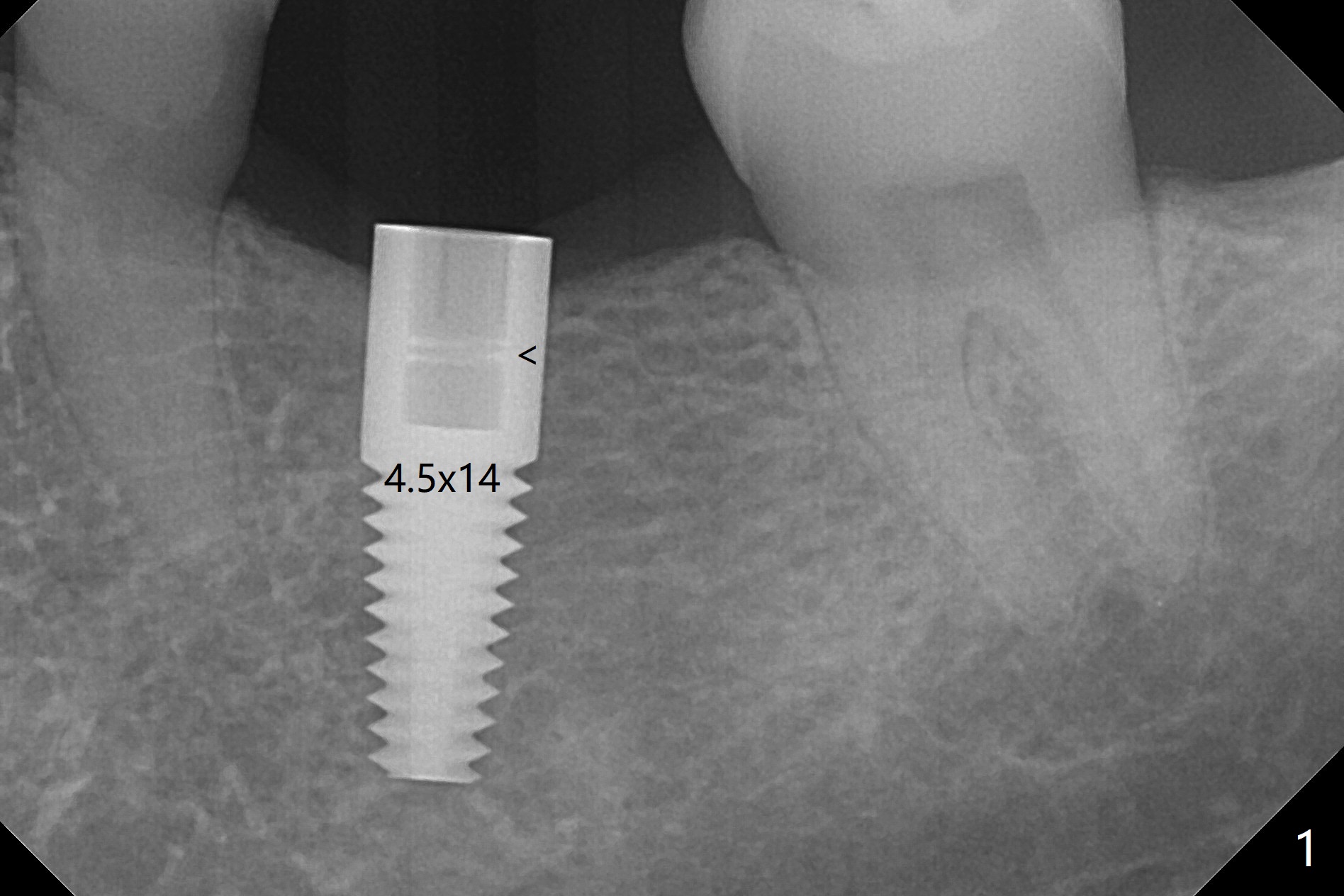
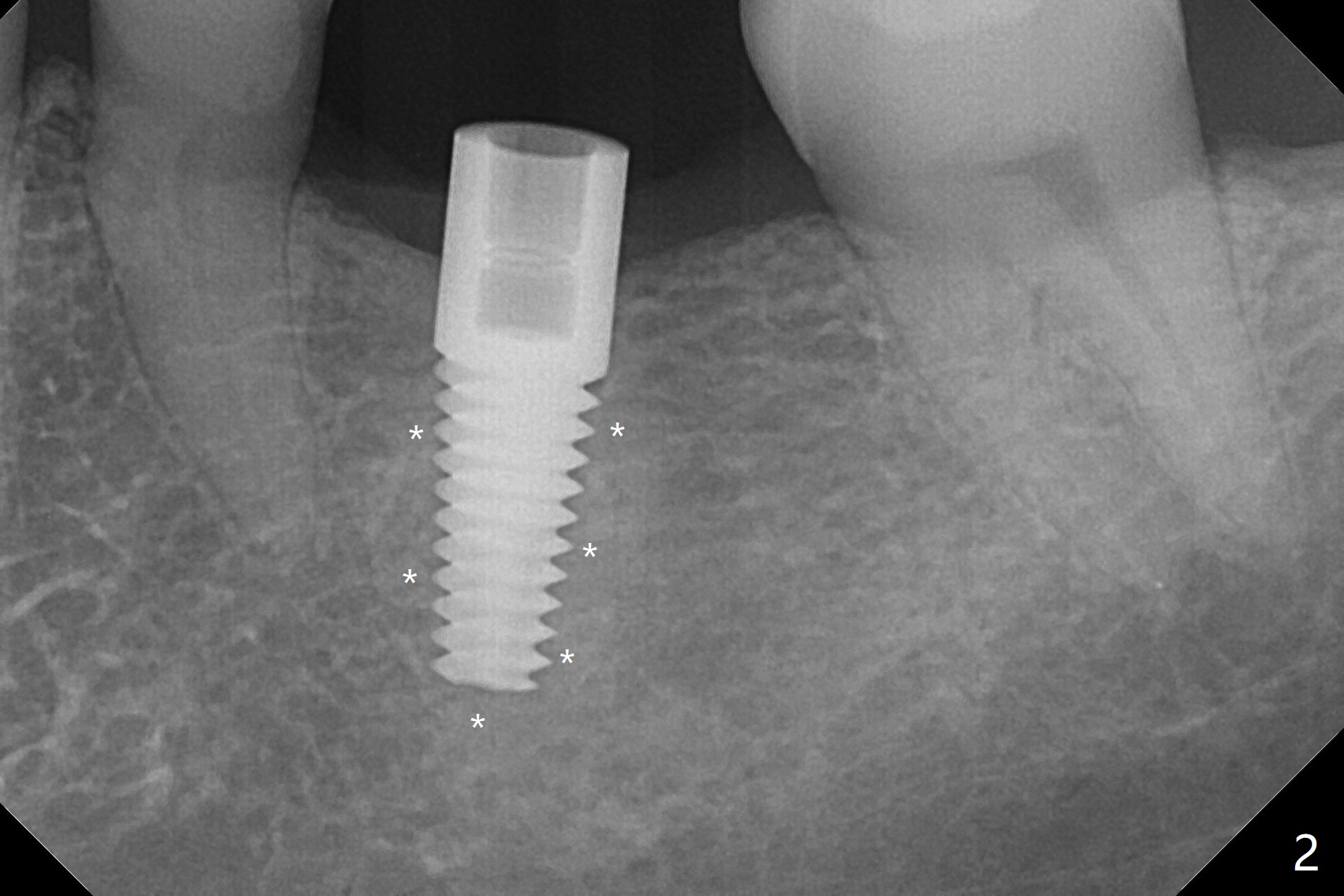
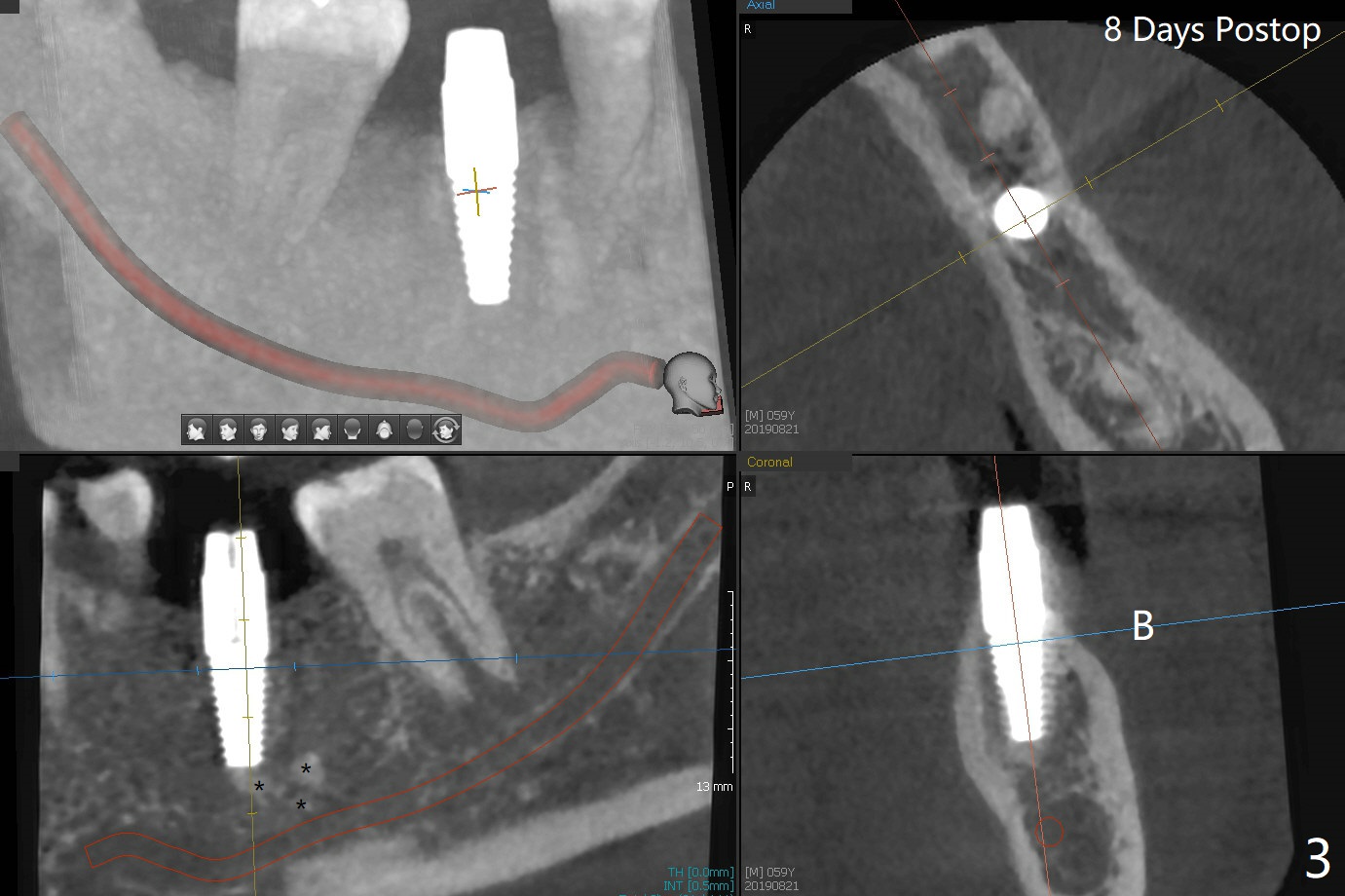
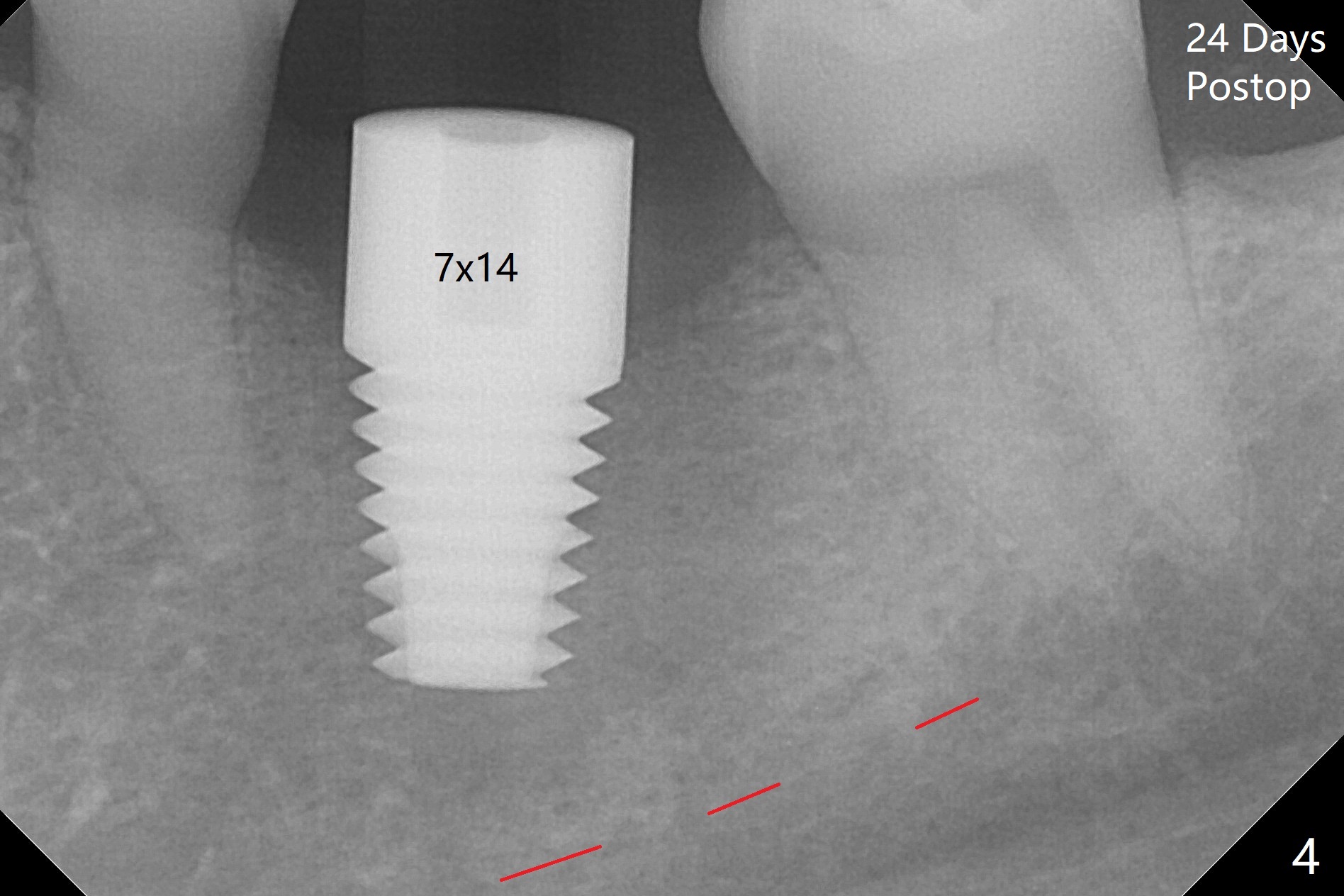
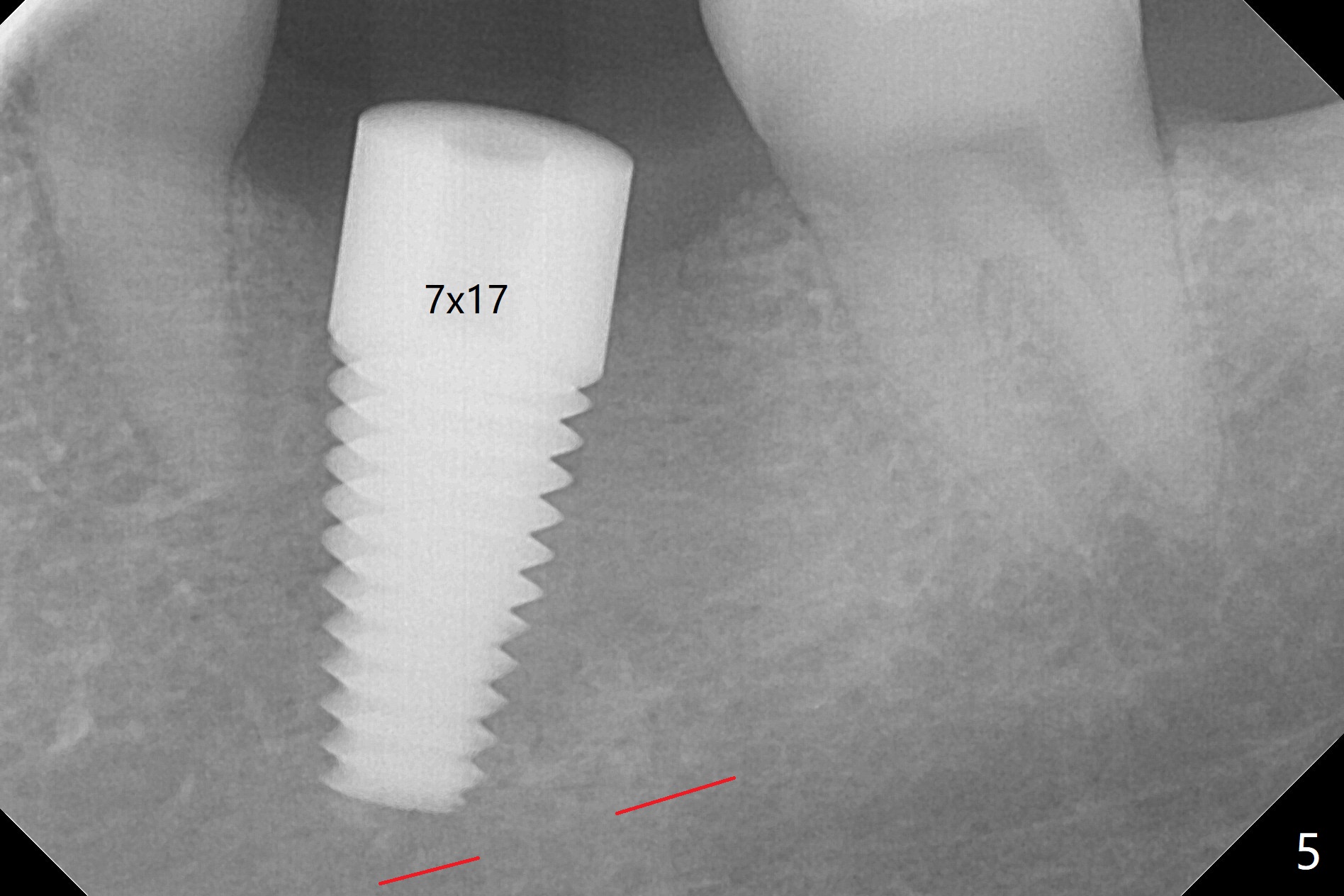
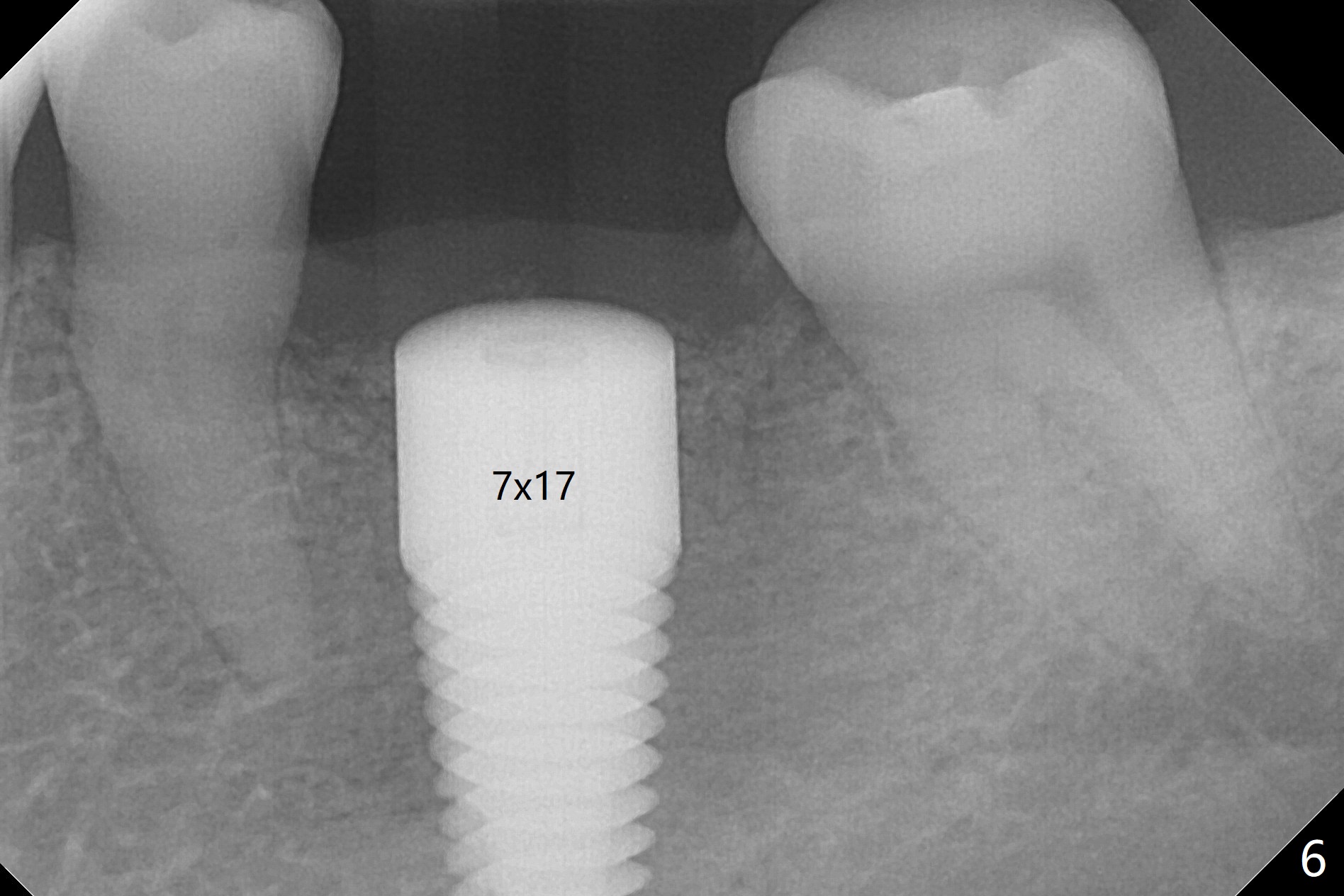
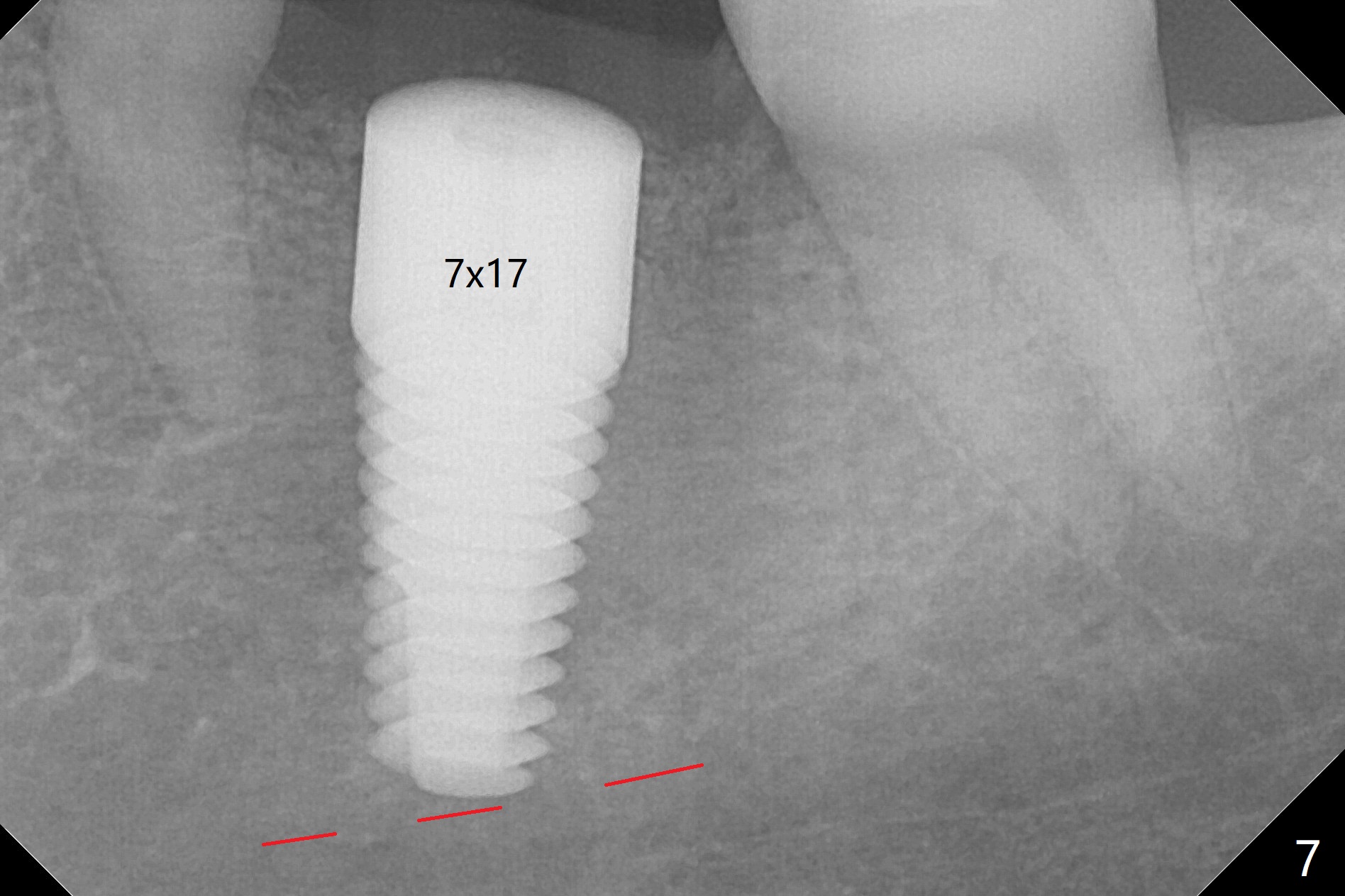
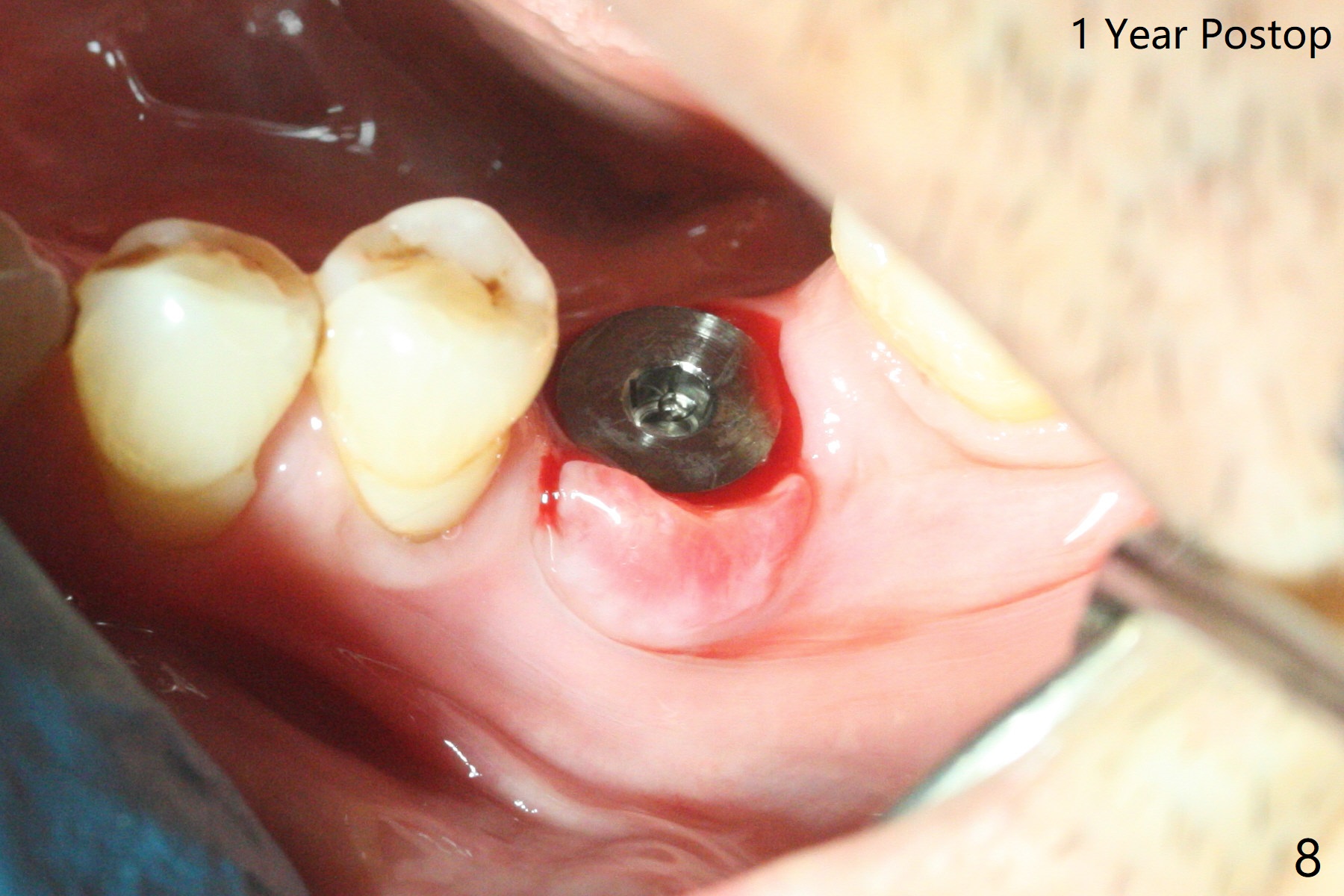
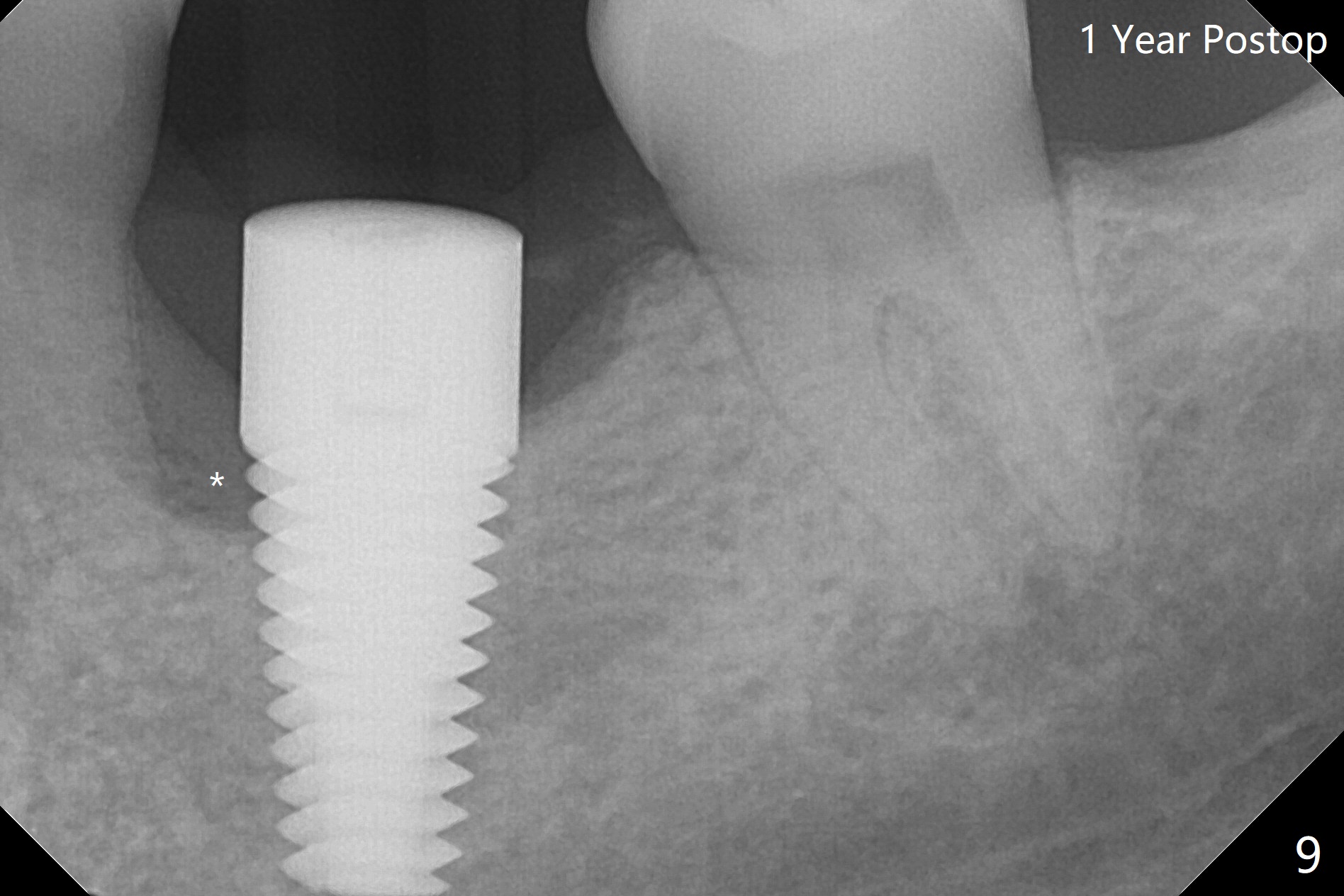
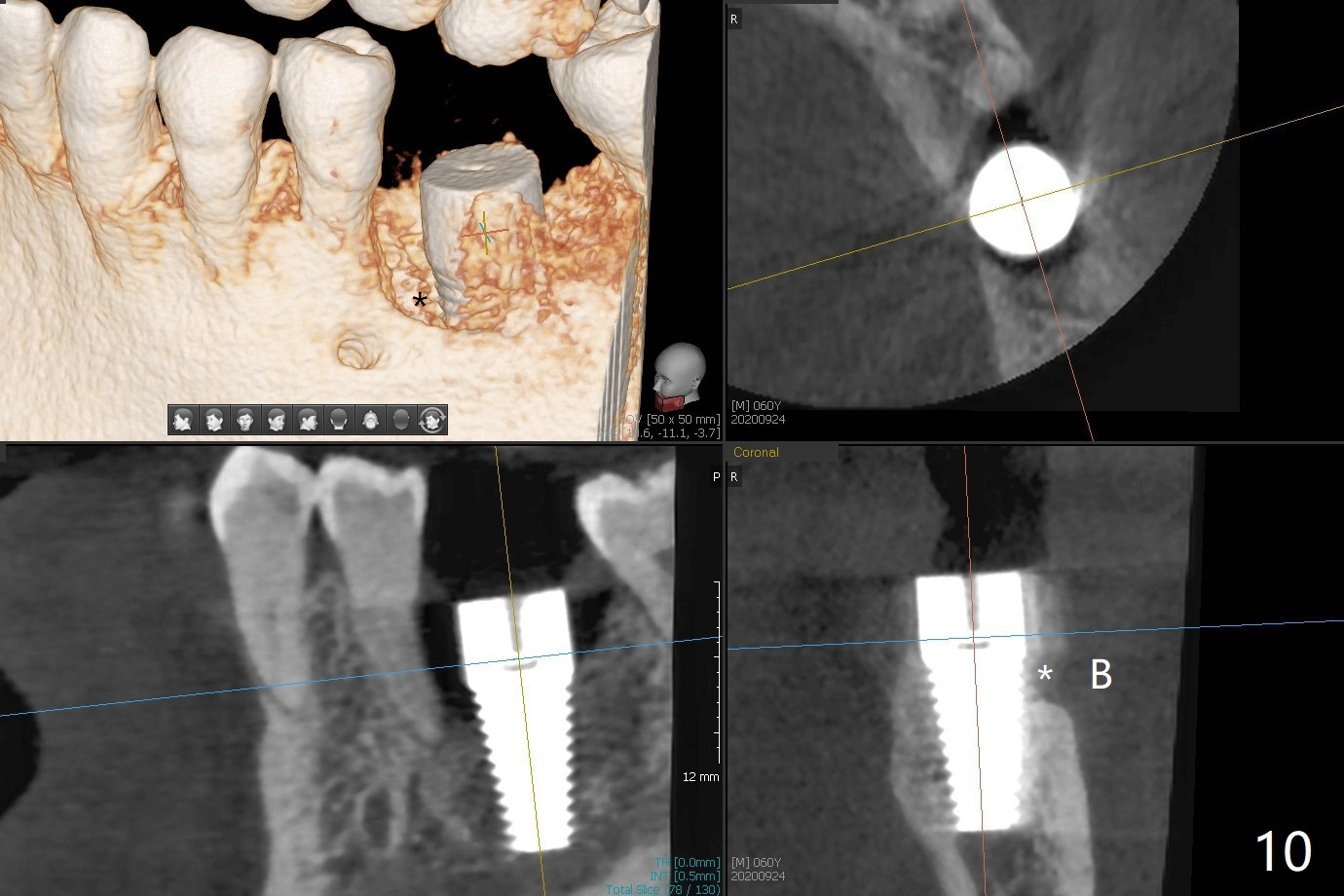
 |
 |
 |
 |
 |
 |
 |
 |
 |
 |
When Torque Reduces Suddenly
After 4.0x10 mm drill with 9 mm offset for 4.5x10 mm bone-level implant at #19, a 4.5x17 mm tissue level tap is inserted with apparently low torque (probably without reaching the depth). When a 4.5x14 mm tissue level implant is placed with high torque, a 4.5x7.3 mm drill is used for ~ 6.5 mm. The implant loses the primary stability with over-insertion (Fig.1). When an abutment is placed, the implant is critically loose. Mixture of autogenous bone, Osteogen and allograft is placed in the osteotomy. The implant regains stability with better placement level for restoration (Fig.2). In fact the bone density around the implant increases (Fig.2 *). For the first 7 days postop, the patient has to take Advil. When he returns for follow up 8 days postop (Fig.3), the pain decreases, while there is minor degree of lower lip paresthesia. Medrol Dose Pak and Tylenol III are prescribed. The implant is loose 24 days postop; after removal of the implant and apparently infected bone graft, a 7x14 mm dummy implant is inserted with <20 Ncm and 3-4 mm clearance (Fig.4). A longer dummy implant seems to improve stability (Fig.5). So does the definitive implant (Fig.6,7, 25 Ncm), but it is placed low. The gingiva looks healthy 13 days postop (2nd placement). A healing cap will be placed for restoration ~ 3 months postop. CT will be taken if the implant needs to be backed up to determine whether there is enough bone buccolingually. Due to coronavirus and prolonged placement of a healing abutment with poor oral hygiene, the buccal gingiva of the implant is erythematous 1 year postop (Fig.8 healing cap just removed) with bone loss (Fig.9,10 *). Sticky bone seems to be necessary. A 6x5 mm abutment with slots will be placed to hold periodontal dressing in place.
Return to
Lower Molar
Immediate Implant,
Trajectory II
Next Case
Xin Wei, DDS, PhD, MS 1st edition
08/13/2019, last revision
10/08/2020